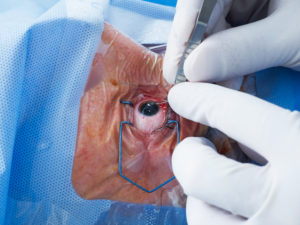 Occasionally, as a retina specialist in Orange County, I am consulted to care for a patient who has had complications from cataract surgery. This article talks about surgical complications of cataract surgery, that is, complications that can occur when surgery is not performed technically correct.
Occasionally, as a retina specialist in Orange County, I am consulted to care for a patient who has had complications from cataract surgery. This article talks about surgical complications of cataract surgery, that is, complications that can occur when surgery is not performed technically correct.
Cataract Surgery
Cataract surgery is one of the most common operations in the world as almost everyone develops a cataract. In almost all cases, after the cataract is removed from the eye, a plastic implant is inserted in place of your natural cloudy lens. The clear implant compensates for the focusing power of the eye and vision can be restored.
The lens is not removed in one piece, but rather is removed by use of an ultrasonic tool which liquefies the lens. This is accomplished with a shaving motion – similar to scooping ice cream.
Cataract surgery enjoys greater than 99% technical success. Over 99% of the time, your cataract was removed and replaced with a lens implant without complications.
Surgical Complications of Cataract Surgery
The most common surgical complications of cataract surgery occur when the cataract is not completely removed and becomes dislodged into the vitreous. The lens falls from its natural position straight down into the vitreous cavity (aka the back of the eye). This is called a retained lens.
A retained lens may occur for several reasons;
- Loose zonules from trauma – the zonules are tiny filaments which keep the lens suspended in the correct position of the eye. Previous trauma to the eye can rupture these filaments, weakening the support needed for cataract surgery. There are natural conditions, too, which weaken the supporting zonules.
- Loose zonules from disease – this can occur naturally from such conditions as pseudoexfoliation, Homocytinuria and Marfan’s disease. There are other conditions where the zonules are either absent or weakened.
- Patient movement during the operation
A retina specialist is often needed to remove the remaining pieces of the lens from the eye. A vitrectomy is performed to allow the remaining lens fragments to be removed safely from the eye without causing damage to the retina.
In most cases, there is little or no harm done to the retina.
